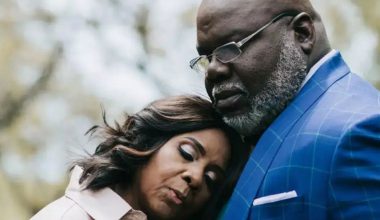Early Life and Overcoming Polio
Evelyn du Pont was born in Newtown Square, Pennsylvania, on July 15, 1924, into a legendary industrial family. After contracting poliomyelitis at age 7, she dedicated her life to inspiring others through aquatic treatment. Even though the condition limited her mobility, Evelyn learnt to swim as part of her rehabilitation—an odd twist for a chemical riches family member whose breakthroughs occurred in water rather than labs.
| Year | Age | Milestone |
|---|---|---|
| 1924 | 0 | Born in Newtown Square, PA |
| 1931 | 7 | Contracted polio; began aquatic therapy |
| 1935 | 11 | Achieved independent swimming against odds |
| 1942 | 18 | Graduated high school with athletic honors |
Evelyn’s willingness to swim at 11 despite right leg disability anticipated her subsequent efforts. Evelyn’s parents, William Henry du Pont and Jean Liseter Austin, supplied special tutors and adaptive sports instructors, but her fortitude got her through daily pool sessions. After graduating from high school in 1942, she coached younger polio survivors while attending East Coast women’s universities.
Creating California Handicapped Pools
In 1992, at age 68, Evelyn founded California Pools for the Handicapped Inc. in Long Beach, starting with a single 25-meter pool and three volunteer instructors. Within the first year, the nonprofit served 200 participants; by its 10th anniversary in 2002, it reported over 4,500 annual users with a staff of 25 certified aquatic therapists. The program provided customized water-based rehabilitation to individuals with spinal cord injuries, cerebral palsy, multiple sclerosis, and other mobility-limiting conditions.
| Year | Number of Pools | Certified Therapists | Annual Participants |
|---|---|---|---|
| 1992 | 1 | 3 | 200 |
| 1997 | 3 | 10 | 1,200 |
| 2002 | 5 | 25 | 4,500 |
| 2012 | 8 | 40 | 9,800 |
Evelyn used buoyancy-assisted exercise, hydrostatic pressure, and her “Resurrection Stroke” to maximise range of motion for severely impaired swimmers. She received $2.4 million between 1992 and 2005, including a $500,000 Rotary Club endowment in 1998 and a $1 million state health agency matching award in 2003.
Recognition and Honors
Evelyn won many advocacy honours in the 1990s and early 2000s. The California Nonprofit Leadership Council recognised her “Outstanding Philanthropist of the Year” in 1994, and the Long Beach Humanitarian Award cited her for “setting disabled bodies free” in aquatic habitats in 1998. She was featured in Women’s History Month campaigns on local public television in March 2001.
| Year | Award | Issuing Organization |
|---|---|---|
| 1994 | Outstanding Philanthropist of the Year | California Nonprofit Leadership Council |
| 1998 | Long Beach Humanitarian Award | City of Long Beach |
| 2001 | Women’s History Month Honoree | Southern California PBS |
| 2005 | Lifetime Achievement in Aquatic Therapy | American Hydrotherapy Association |
Evelyn said at her 2004 80th birthday gala, “I never thought I’d be famous for teaching adults to dog-paddle,” demonstrating her wit amid serious activism. Her “Blue Cap” fundraiser raised $125,000–$200,000 for program expansion annually.
The Du Pont Dynasty and Evelyn’s Niche
The du Pont family’s American industrial roots stem from Éleuthère Irénée du Pont’s 1802 gunpowder plant, but Evelyn distinguished herself in philanthropy. Evelyn focused on grassroots therapeutic programs, unlike cousins like John Eleuthère du Pont, whose 1996 Foxcatcher Farm scandal eclipsed prior philanthropy. Instead of enormous family trust funds, she preferred communal fundraising.
| Family Member | Relation to Evelyn | Notable Fact |
|---|---|---|
| William Henry du Pont | Father | Executive at E.I. du Pont de Nemours & Co. |
| Jean Liseter Austin | Mother | Patron of local arts and education |
| John Eleuthère du Pont | Cousin | Founder of Foxcatcher Farm; convicted in 1997 |
| Margaret Osborne du Pont | Distant cousin | Five-time Wimbledon champion |
| Amy Elizabeth du Pont | Distant cousin | $112 million endowment to University of Delaware |
Forbes stated in 2024 that the family’s $18.1 billion net worth exceeded Evelyn’s low seven-figure net worth. She started her organisation with 2% of an inheritance, emphasising sustainability through local partnerships and sliding-scale fees rather than aristocratic family riches.
Enduring Impact: Pools of Hope Today
Following Evelyn’s passing in late 2006 at age 82, the organization rebranded to Pools of Hope in her honor. As of 2025, it operates 12 facilities across California, including Long Beach, Pasadena, and San Diego, and serves approximately 15,000 participants annually. Its legacy metrics reflect both depth and scope:
| Metric | 1992 | 2006 | 2025 Estimated |
|---|---|---|---|
| Facilities | 1 | 5 | 12 |
| Total Participants (cumulative) | 200 | 15,000 | 120,000 |
| Annual Fundraising (USD) | 50,000 | 750,000 | 2,500,000 |
| Staff & Volunteers Combined | 5 | 60 | 180 |
In 2018, Pools of Hope created a mobile therapy unit to provide in-home water therapy to rural communities; by 2024, it reached 800 remote participants per year. Evelyn’s “Resurrection Stroke” is taught at summer certification courses for approximately 150 aquatic therapists.
FAQ
What made Evelyn du Pont choose water therapy?
Her 7-year-old polio battle showed her how water may restore mobility, inspiring her to help others.
How many people benefit annually from Pools of Hope?
About 15,000 people use aquatic treatment at 12 California facilities in 2025.
When did Evelyn du Pont pass away?
Evelyn du Pont, 82, died in December 2006, leaving a successful organisation.
What is the “Resurrection Stroke”?
The “Resurrection Stroke” is Evelyn’s distinctive water-based workout to maximise joint mobility for severely impaired swimmers.
How does Pools of Hope fund its programs?
Using sliding-scale participant fees, annual fundraising galas, corporate contributions, and government collaborations to ensure financial stability without significant trust funds.
How does Evelyn du Pont vary from her relatives?
Evelyn focused on community-level aquatic therapy, unlike many relatives who focused on business and high-profile giving.


